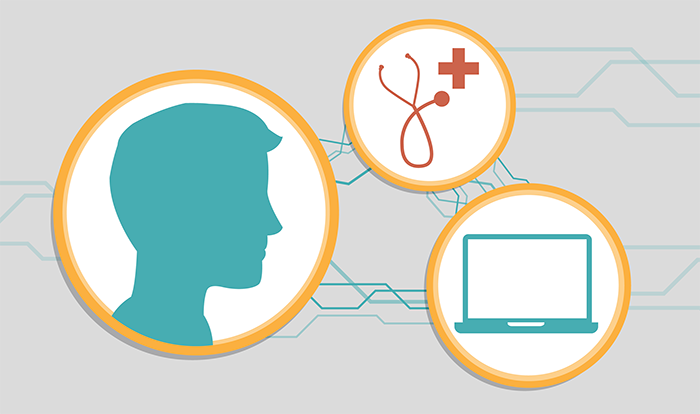The Role of Telehealth in Behavioral Health Care
In recent years, the healthcare industry has witnessed a transformative shift with the integration of telehealth services, particularly in the realm of behavioral health care. The advent of telehealth has revolutionized the way mental health services are delivered, making them more accessible, efficient, and effective. This article explores the significant role telehealth plays in behavioral health care, highlighting its benefits, challenges, and future prospects.
Understanding Telehealth and Behavioral Health
Telehealth refers to the use of digital information and communication technologies, such as computers and mobile devices, to access health care services remotely. It encompasses a wide range of services, including virtual consultations, remote monitoring, and patient education. Behavioral health, on the other hand, involves the promotion of mental well-being, the prevention of mental health disorders, and the treatment of mental health and substance use conditions.
The integration of telehealth in behavioral health care has been particularly impactful, given the unique challenges associated with mental health services. Traditional face-to-face therapy sessions often require patients to overcome significant barriers, such as geographical distance, transportation issues, and scheduling conflicts. Telehealth addresses these barriers, providing a more flexible and accessible alternative.

Benefits of Telehealth in Behavioral Health Care
- Increased Accessibility: One of the most significant advantages of telehealth in behavioral health care is the increased accessibility it offers. Individuals living in rural or underserved areas often face difficulties in accessing mental health services due to a lack of nearby providers. Telehealth bridges this gap, enabling patients to connect with mental health professionals from the comfort of their own homes.
- Convenience and Flexibility: Telehealth provides unparalleled convenience and flexibility for both patients and providers. Patients can schedule appointments at times that suit their busy lifestyles, reducing the need to take time off work or arrange childcare. Providers, on the other hand, can manage their schedules more efficiently, potentially seeing more patients in a day.
- Reduced Stigma: The stigma associated with seeking mental health care can be a significant barrier for many individuals. Telehealth offers a level of anonymity and privacy that can help reduce this stigma, encouraging more people to seek the help they need without fear of judgment.
- Continuity of Care: Telehealth ensures continuity of care, particularly for patients who may need to relocate or travel frequently. With telehealth, patients can maintain regular contact with their mental health providers, ensuring consistent and ongoing support.
- Cost-Effectiveness: Telehealth can be a cost-effective solution for both patients and providers. Patients save on transportation costs and time, while providers can reduce overhead expenses associated with maintaining a physical office space.
Challenges and Limitations
While telehealth offers numerous benefits, it is not without its challenges and limitations. It is essential to address these issues to ensure the effective and equitable delivery of behavioral health services.
- Technological Barriers: Not all patients have access to the necessary technology or a reliable internet connection to participate in telehealth sessions. This digital divide can exacerbate existing disparities in access to mental health care.
- Privacy and Security Concerns: The use of digital platforms for mental health services raises concerns about the privacy and security of patient information. Ensuring compliance with regulations such as the Health Insurance Portability and Accountability Act (HIPAA) is crucial to protect patient confidentiality.
- Limited Scope of Services: Certain aspects of behavioral health care, such as emergency interventions or hands-on therapies, may be challenging to deliver via telehealth. Additionally, some patients may prefer face-to-face interactions and may not feel comfortable with virtual sessions.
- Licensing and Reimbursement Issues: Telehealth services are subject to varying state regulations and licensing requirements, which can complicate the delivery of care across state lines. Additionally, reimbursement policies for telehealth services can vary among insurance providers, potentially limiting its widespread adoption.

Future Prospects of Telehealth in Behavioral Health Care
Despite these challenges, the future of telehealth in behavioral health care looks promising. The COVID-19 pandemic has accelerated the adoption of telehealth services, highlighting their potential to transform mental health care delivery. Several key trends and developments are likely to shape the future of telehealth in this field:
- Technological Advancements: Continued advancements in technology, such as improved internet connectivity, artificial intelligence, and virtual reality, are expected to enhance the capabilities of telehealth platforms. These innovations can provide more immersive and interactive experiences, improving the quality of care.
- Policy and Regulatory Support: Policymakers and regulatory bodies are increasingly recognizing the value of telehealth and are working to create a more supportive environment. Efforts to standardize licensing requirements, expand reimbursement policies, and address privacy concerns will facilitate the growth of telehealth services.
- Integration with Traditional Care: Telehealth is likely to become an integral part of a hybrid care model, combining virtual and in-person services. This approach can offer patients the best of both worlds, providing flexibility while ensuring comprehensive care.
- Focus on Preventive Care: Telehealth can play a crucial role in preventive behavioral health care by enabling early intervention and regular monitoring. Digital tools and apps can help track patients’ mental health status, providing timely support and reducing the risk of severe mental health issues.
- Increased Awareness and Acceptance: As telehealth becomes more mainstream, public awareness and acceptance of virtual mental health services are likely to grow. This cultural shift can reduce stigma and encourage more individuals to seek help, ultimately improving overall mental health outcomes.
Conclusion
Telehealth has emerged as a game-changer in the field of behavioral health care, offering increased accessibility, convenience, and cost-effectiveness. While challenges such as technological barriers and privacy concerns exist, the potential benefits far outweigh these limitations. As technology continues to advance and policies evolve, telehealth is poised to play an even more significant role in the future of mental health care. By embracing telehealth, we can ensure that behavioral health services are more inclusive, equitable, and effective, ultimately improving the well-being of individuals and communities.












